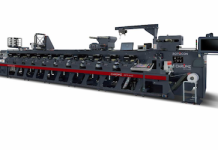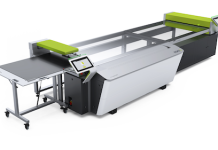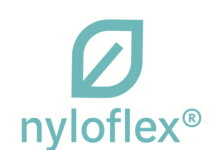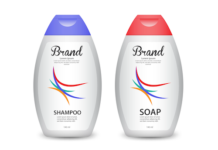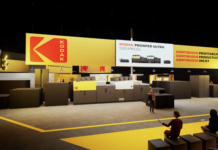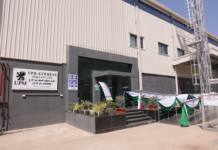According to Focus Label Machinery, selecting the best technology for narrow web printing extends to the inks and drying systems you use, as well as the printing technology itself. Flexographic and hybrid solutions aside, the two contenders for the best digital printing system for narrow web are digital inkjet and digital toner and offset systems.
Narrow web printing requires a specific methodology and type of printing press to get the best results and lowest operating costs. Narrow web printing is a term used in both flexographic and digital printing to describe any web measuring less than 500mm (20 inches). In some cases, this may include conventional as well as digital printing systems with or without in-line converting options. This is contrasted with wide web printing, which uses larger webs of 1000mm (40 inches) plus or more in width in the packaging sectors.
Digital inkjet printing systems
Digital inkjet printing machines differ from some other digital systems in that they directly print a digitised image onto a substrate, rather than indirectly through a print medium or an image carrier.
In flexographic printing, the medium is a polymer printing plate that acts as a ‘master image’ for the print run, and in digital dye sublimation printing, the image is first printed in reverse onto a transfer medium before being transferred to the substrate using sublimation inks and a heat press. In other methods, different mediums are used, so digital inkjet is fairly unique as a direct print method, with many potential advantages to printing businesses.
Digital inkjet printing presses are available in Mono, CMYK, or CMYK + 3 more colours, and each operate using a printhead perforated with thousands of small nozzles or openings. These openings are used to transfer liquid inks directly onto a substrate, usually by heating the ink to the point where it vaporises into a bubble, which then collapses through thin tiny individual droplets. This continuous dosing process allows precision control over the flow and pressure of ink transfer and prevents smudging.
Commercial advantages of digital inkjet printing:
– Short set-up time: digital inkjet printing requires far less pre-preparation than offset printing, allowing faster print runs and short turnaround orders.
– Personalisation: digital inkjet offers great scope for customisation within print runs, with images and text easily changed between print runs, without having to change printing plates.
– Quality: the inkjet method is known for its reliability, consistency and quality across a range of substrates and applications, with good colour fidelity and the capacity to replicate complex graphics and designs across large print cycles.
– Flexibility: digital inkjet presses are compatible with thousands of commercial substrates, including textiles, metallic foils, plastics and paper-based substrates.
Disadvantages
– The inkjet process can cause ink bleeding and blurring on some substrates, so compatibility testing is required, or special pre-coating prior to digital printing.
– Slower printing speed than conventional offset and flexographic presses, which is why many printing businesses reserve their inkjet equipment for short volume requirements.
– Because of the high ink costs, digital inkjet is not as cost-effective for high-volume printing as flexographic and traditional offset methods.
– The inkjet printhead can become clogged and easily damaged, requiring frequent cleaning and maintenance, and regular replacement. Service and maintenance costs are high and need to be factored into your business model.
– High ink costs are holding back acceptance of inkjet technology.
Digital toner and offset printing
Digital offset printing is different to inkjet in that it requires an imaging plate to transfer images to the substrate. This imaging plate serves a similar process to the plates used in lithographic and flexographic printing but is entirely digitally controlled. The plate is electrostatically charged so that only certain areas receive ink, allowing the plate to be customised for a variety of computerised graphics and text.
During the print cycle, the imaging plate is transferred to a heat blanket – which melts and blends ink/toner particles into a smooth fluid – and then to a photo drum, in which the ink is imprinted onto the substrate to form the required image. Digital offset printing is a sophisticated method that is used to produce extremely high-definition images on labels and textiles, by combining the benefits of inkjet printing with some of the methods of flexographic printing. Unlike analogue printing methods, however, the imaging plate in digital offset printing can be ‘reset’ to receive a new electrostatic charge, without needing to create an entirely new plate each time.
Advantages
There are several reasons why printing businesses may choose a digital offset printing system rather than an inkjet solution:
– High-definition quality images of 1200dpi or more, with excellent consistency and replicability.
– A cost-effective way of creating premium images at low to mid volumes.
– Digital offset printing is compatible with a huge range of narrow web substrates and can be augmented with a variety of bespoke finishes and treatments.
– Compatible with some specialist inks, including white, metallic and spot Pantone inks.
– Fixed charges are often applied known as a ‘click charge’ based on a fixed print area, let say one linear metre. With this scenario, you are quickly able to decide if a job is practical to run through a digital or conventional process.
Disadvantages
– Lack of durability – the main weakness of digital offset technology is the vulnerability of printed images to smudging and abrasion, although this can be reduced by applying various coatings or laminates.
– Higher set-up costs – digital offset printing requires the preparation of imaging plates, with longer setup times and higher costs than inkjet printing.
– Digital offset printing presses often fall short of analogue flexographic presses in terms of speed and cost per unit over high-volume print runs.
– These presses require constant maintenance from the manufacturer for support in terms of toner, inks, print blankets and technical service. Whilst this can be factored into a click charge, a monthly service charge or both, you will be totally reliant on the manufacturer and their ability to support the equipment through its life-time.
– Ever increasing click and service costs over time.
FOCUS LABEL MACHINERY
jamesb@focuslabel.com
https://www.focuslabel.com



